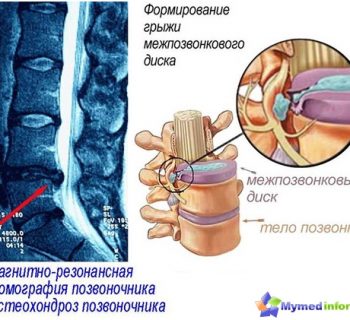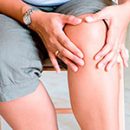Renal colic and causes of its occurrence

The acute attack of pain in the area of the belt is usually coming as a result of a sharp violation blood circulation In the kidney and the outflow of urine from it. Renal Lohanka is stretched under the pressure of the accumulated fluid, causing wild pain. It begins suddenly, with a gradual increase in the lower back, moving in groin, leg and genital organs. To tolerate this condition is practically impossible and good when close people who are able to provide first aid are near patients. It is very important to know at the same time that the spasm could provoke. And wake up the kidney colic the following pathologies:
- Urolithiasis, as the most common cause. As a rule, severe pain occurs when the stone is moving along the blades and clogging the scope of the ureter;
- Acute or chronic pyelonephritis;
- kidney tumor;
- Various kidney injuries;
- Gynecological ailments.
Usually, no symptoms are preceded by renal colic with urolithiasis. Man feels great, and at some point he feels pain syndrome. You can make a stone after hitting the back or fall, a large amount of beer drunk or, for example, after an eaten watermelon. Reception of diuretic drugs for the prevention of the formation of stones also leads a concrete in motion. Often, pregnant women on the third trimester of pregnancy begins to move pebbles. This happens due to the expansion of the urinary tract characteristic of this period of gestation.
The risk of forming stones in the kidneys is higher in people who:
- have a genetic predisposition to the disease;
- A few years ago, a stone from the kidney was already displayed. In this case, the probability of repetition of the situation is 60%;
- constantly transfer exercise;
- work in continuous overheating;
- Previously, the diseases leading to the formation of stones (kidney polycystic);
- Durable medicines.
Feelings of the patient

With the primary appearance of such pain, a person must necessarily call ambulance and go to the urological department. Only a specialist will be able to determine the true cause of colic.
As a diagnosis, the doctor applies the following methods:
- examination of the patient and assess its condition;
- palpation of the lumbar region;
- study of pulse and blood pressure;
- Fixing the accompanying pain symptoms: nausea and vomiting.
The most reliable way to study the kidney is x-ray. A special contrast agent that is administered to the patient intravenously allows you to see the position of the stone, changing the urinary tract, the possible shift of the kidney or the bend of the ureter.
This method of diagnostics also identifies many other, rare reasons for kidney colic.
First aid and renal colic treatment

- Feeling a sharp pain, the first thing to do is to take an electrical drug. As practice shows, But-shp and Ibuprofen This issue is almost powerless, Baratgin will help a bit of pain syndrome. In the hospital, this drug knees intramuscularly, and, by the way, it also helps it either.
- The next step on the removal of spasm will be the adoption of a hot bath. Filling the reservoir to half, you need to go to the water at least 15 minutes. Thanks to this procedure, the wall of the ureter will slightly weaken, the voltage will fall and the patient will feel relief. Water should be hot enough to be in it almost impossible. Such a procedure should be carried out solely if the cause of pain is a urolithiasis.
- In the hospital conditions, the doctor can offer a patient with a heating, which also has a similar effect.
- Conservative treatment of renal colic consists in prescribing to a patient of special litholitic drugs to remove stones from a ureter.
- In addition to the above measures with renal colic, it is important to comply with drinking mode. Need to drink diuretic tea, water, compotes and fruit in the amount of up to 3 liters per day.
- The promotion of the concrete contributes physical activity. If the forces are allowed, and managed to remove the main symptom of the renal colic, then you can walk along the stairs, spend or hang on the spot. These exercises push the stone to exit.
Operational intervention
As mentioned above, with the size of a stone up to 5 mm, there is hope to withdraw it with conservative treatment. However, in more launched cases, when the stones are achieved in size 1.5 cm, and serious complications arose, doctors do not have anything but to carry out the operation.
Previously, when there were no such minimally invasive medical technologies, in urology practiced open operations in order to remove stone and restore urine dyeing from the kidney. Today there are new equipment that allows you to remove the concrement with minimal intervention and practically painlessly. Thanks to such a device as a lithotripter, you can remotely crush the stone ultrasound.
If the renal colic was caused by other symptoms, for example, the inflammation of the kidney or a tumor, then in this case the doctors perform the operation to restore urinary tract or removal of the organ.
Renal colic: diet observance

Salt in the diet must be limited to the maximum. In order not to exacerbate pain syndrome, it is recommended to remove such products from your daily menu as:
- salt, sharp spices and seasonings;
- coffee;
- alcohol;
- sweets;
- Radish meat broths;
- chocolate;
- beans;
- Smoked.
You can eat watermelons, pumpkins, zucchini, different fruits, juices and vegetables. Equality products and egg proteins are also not prohibited. As the pains are thickened, you can add low-fat meat and fish to the diet. The first dishes during the exacerbation of the renal colic should be vegetarian and dietary. Vegetables better disappear.
Since the renal colic has begun, our site recommends consuming a large amount of liquid that will help the kidneys to bring infection and rinse existing stones. Depending on the type of accretion (uracha, phosphate, oxalate, and so on) you need to select the appropriate diet.
Unfortunately, people who do not know what renal pains are usually ignored by diet and other recommendations of the doctor. If there is a predisposition to the formation of stones, then the likelihood is that pain syndrome will repeat again. «Thick» Watering is a beneficial environment for the formation of pebbles, that's why it is so important to use a sufficient amount of clean water.
Renal colic is a pathology, the cause of which only a specialist can determine the occurrence of. That's why it is extremely undesirable to tighten with the appeal to the medical institution.









